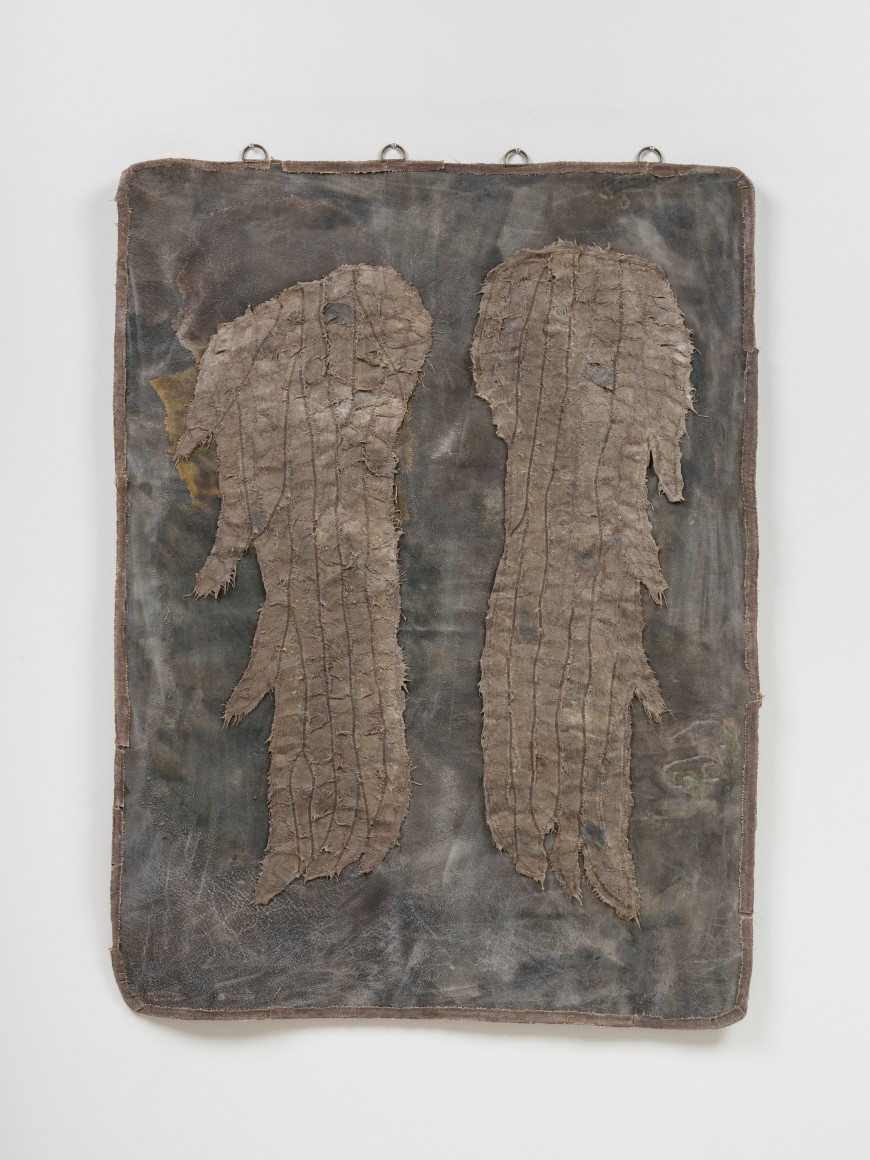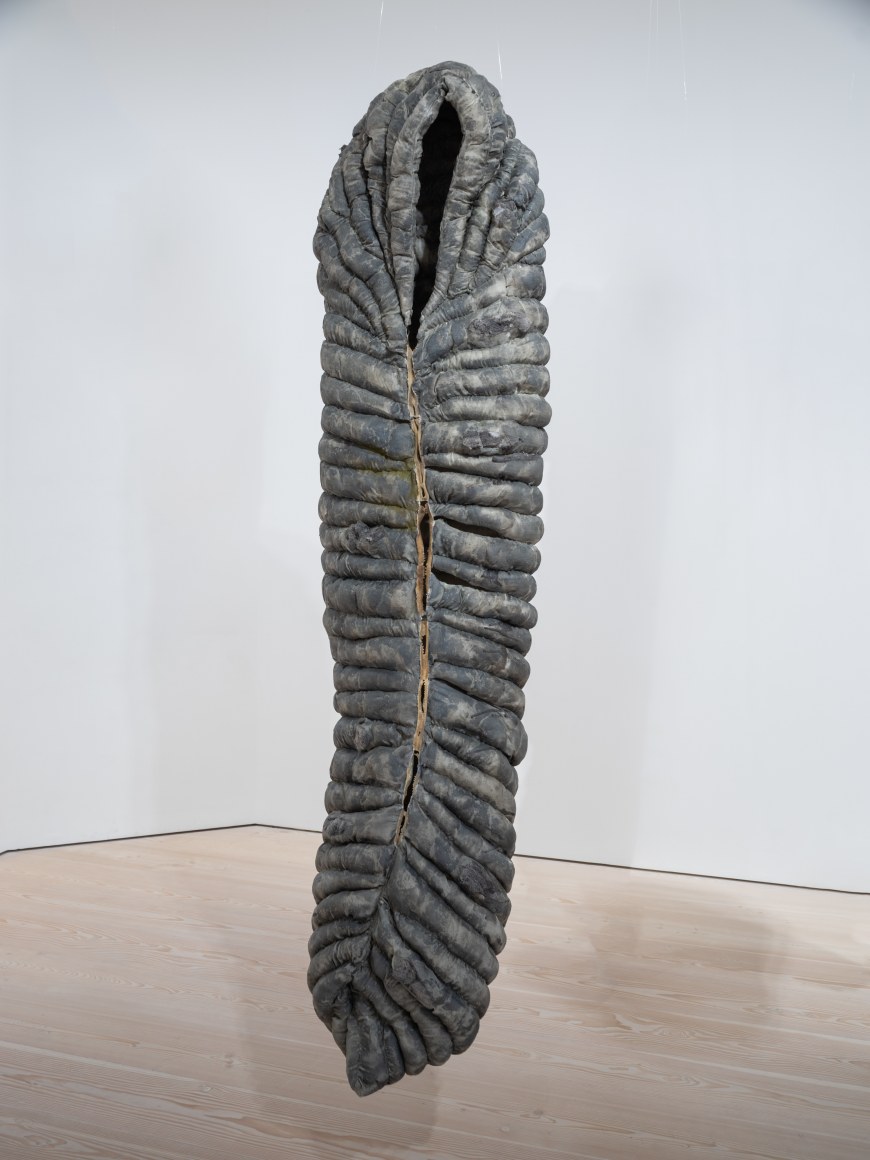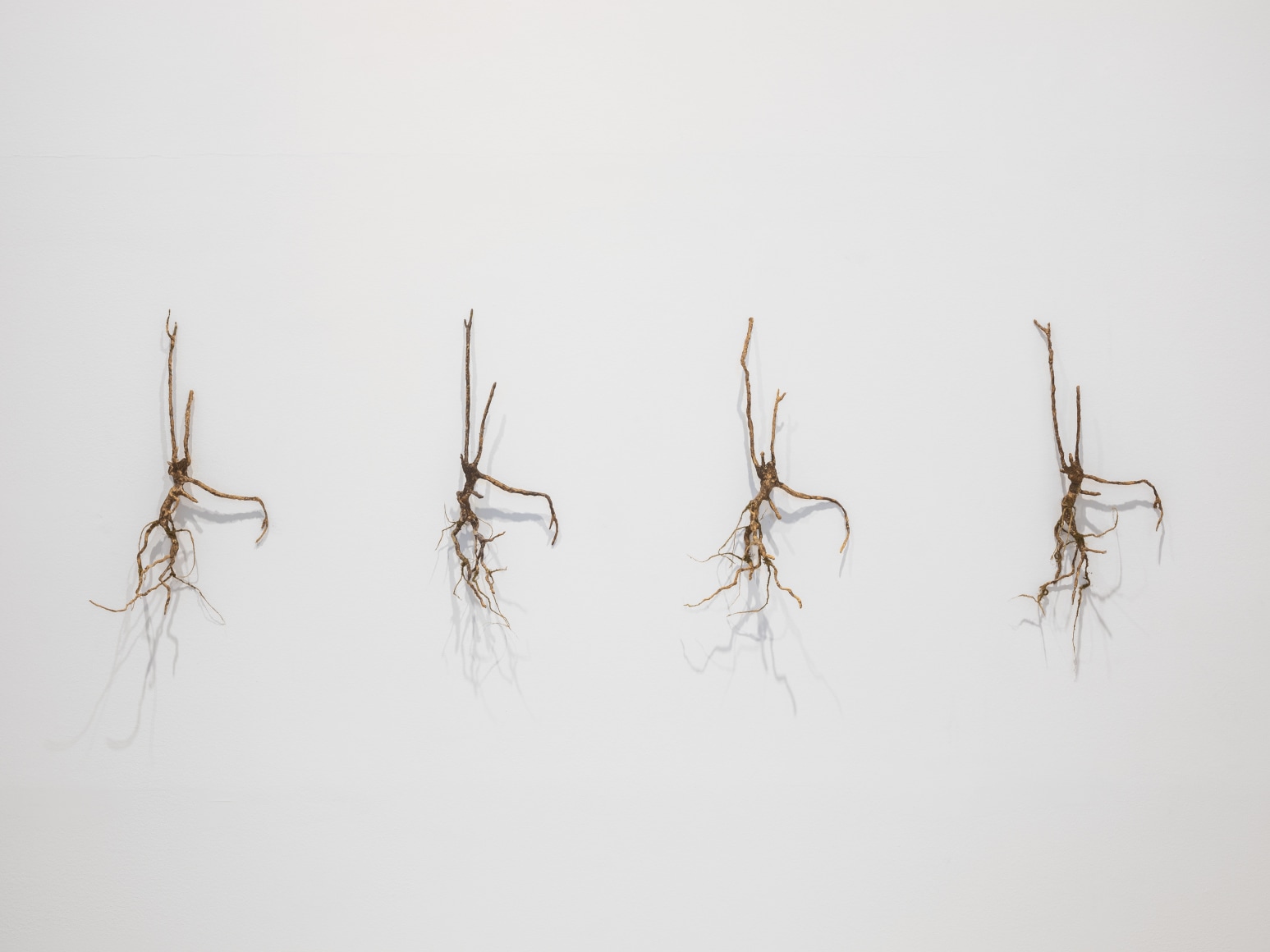Moa Israelsson: Go, Gone
Galerie Forsblom Stockholm
May 17–August 11, 2019
Opening in the presence of the artist, May 16, 5–7pm
Galerie Forsblom is happy to present Moa Israelsson’s first solo exhibition at the gallery in Stockholm. Israelsson’s work revolves around spirituality, folklore and occultism. For this exhibition she has developed a story around an apocalyptic future, where the civilization seems to be perished and mankind extinct. A sole survivor has created her own world. In order to maintain a former structure of everyday life she has made sleeping bags of cocoons and cutlery of wood. But when looking more closely and examining the material, it isn’t natural elements that has been used, but material such as iron, wire and acrylic composite. The cocoons are made of silk, latex, padding and raw leather and are handmade; not made by an insect. The objects are like bodies, as if left behind by the former inhabitants. Roots hanging on the wall are exact copies, cloned, and the question of what has happened is substantial.
A survival kit with equipment like snares and fish traps and has been made, as well as amulets for protection against potential threats. The handicraft, the monotonous work and the process of creating, is a way to restore the ordinary life and to maintain the culture. It is a way to subsist. For Israelsson the creating process is as important as the result. She examines the borderland between reality and fiction and creates an illusion of alternative society and another world. By using material that imitates elements from nature, the objects are transformed into cultural contingent works. One of the artworks, the Baby Blanket, is made for her daughter to protect, to mother and embrace. This is Israelsson’s first textile piece and marks a new direction and a post-minimalistic approach in her work.
Israelsson (b. 1982) lives and works in Åkers Styckebruk, Sweden. She graduated from the Royal University College of Fine Arts, Stockholm in 2010. Her works have been exhibited extensively in various solo- and group exhibition. She has received several grants, among those the Swedish Art Grant, 2018–2019 and Sörmland’s Culture Grant, 2018. Her works are represented in private and public collections, including the Public Art Agency Sweden.








